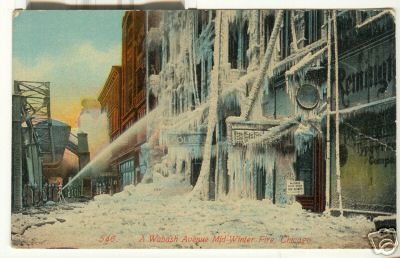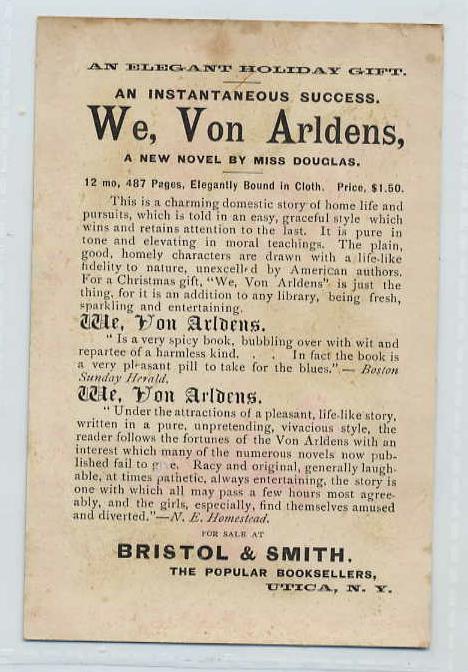
My personal collection of book trade ephemera is *supposed* to focus on the book trades of the frontier. I have to remind myself of that every once in a while. Am I the only one who gets sucked down tangents? I doubt it.
Anyway, I've had a business card for a while for one FR Aldrich, an agent for Advance Steam Printing Co. in Norman, Oklahoma Territory. Now, Norman was founded and occupied the night of the initial land run into the Unassigned Lands April 22, 1889. Oklahoma became a state in November 1907. That date range was the closest I could get to FR Aldrich and his business. An 18 year gap is a little too big for me for someone really not all that long ago or far away.
I tried Googling the name F.R. Aldrich, thinking Aldrich would be an uncommon enough name to locate easily. I did find lots of Fr. Aldriches, as in Father Aldrich, and I did find a couple FR Aldriches. One was a female college student in the 1940s on the east coast, others had too little info for a positive ID. But one suspect turned up in Kansas in 1913 and 1916 and was a school district superintendent. He (?) could be the same person. Not much difference in time and location, but a little bit of a career shift. Then again, we've already uncovered more than one barber bookseller. I could see how connections to publishing and printing could be useful as a school superintendent.
I turned my attention to identifying the font used for the main text. I had hoped the font would help me date the card. Printers like to use new hip typefaces in their advertisements, an opportunity to show off new faces and technical capabilities. If I can get the actual name of the face, maybe I can track down a date and get closer to figuring out FR Aldrich's story. Today, thanks to the charter member from Michigan of the American Book Trade Index, I found another example of this cool, but odd font in a directory ad for a newspaper in Ann Arbor Michigan from 1892.

The 1892 date of the directory is spot on for the range I already had. I've run through the resources of the Oklahoma Historical Society for FR Aldrich and the Advance Steam Printing Co. without any luck. I ran the FR Aldrich card through What the Font , a website you can upload .jpg files and the website searches out the closest match for your font. The first time I ran the card through none of the "matches" were even close. Admittedly, the image of the card isn't very sharp, and there just aren't that many letters to work with, especially letters that would be totally unique to this type face. I ran the Ann Arbor Democrat ad through, and What The Font matched it very closely to a face called Trapeze Normal. Very cool. Almost.
The problem is that there are other computer fonts called Trapeze, and I can't seem to find the historic typeface's name it is based on. It's a lead and perhaps one more piece of the puzzle. Maybe just a piece of a piece.
But, Emma E. Bower caught my eye. Now, it really was not uncommon for women to be editor/ publishers of newspapers in the U.S. In fact, women had been in charge of presses from the very earliest presses in North America in 1639. However, in many cases, these women were widows taking full control over the family printing business. They would often operate under their husband's name, or under initials.
Googling Ms. Bower reveals some tempting tangents. First of all, she is Dr. Emma E. Bower, M.D., of Port Huron, St. Clair County, Michigan. Not only a Democrat, but a Delegate to Democratic National Convention from Michigan, in 1920. She served as Secretary of the Ladies of the Maccabees, an insurance/ fraternal organization for women only, from 1893 until at least 1919. The Knights of the Maccabees claim them as an auxiliary organization at least well into the 1920s. The Ladies of the Maccabees said they started out as such, but had become "wholly independent" after a couple short years. Her name also appears with some mentions of the suffrage and temperance movements, but I couldn't find any specifics or print sources I could access for more info. She certainly sounds interesting!
So, from the Land Run in Oklahoma to a suffragette in Michigan. Stupid tangents...







